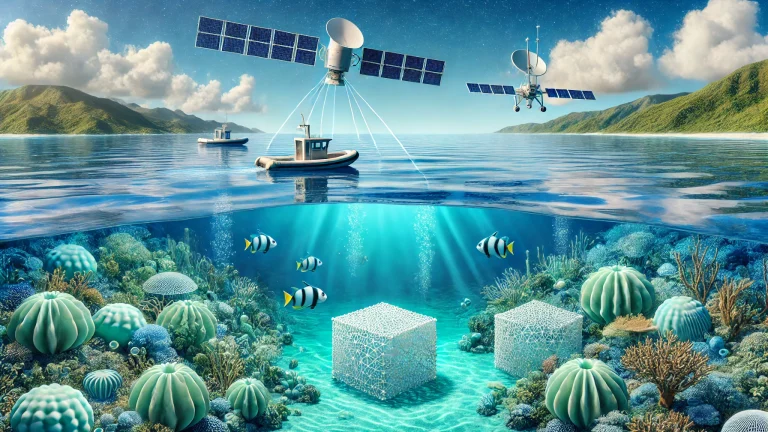The health of our oceans is paramount to the overall well-being of our planet. As concerns about climate change, pollution, and overfishing grow, it becomes increasingly important to adopt innovative technologies and practices to safeguard ocean habitats. This comprehensive guide explores the latest advancements that are making a significant impact in protecting marine biodiversity and ensuring the sustainability of our ocean resources.
Marine Protected Areas (MPAs)
Marine Protected Areas (MPAs) are designated regions where human activities are regulated to protect marine life and habitats. These areas are critical for preserving biodiversity and allowing ecosystems to recover and thrive. Over 100 nations have committed to protecting 30% of the world’s oceans by 2030 through the establishment of MPAs.
Advanced Monitoring Technologies: To ensure compliance and effective enforcement of regulations within MPAs, advanced technologies such as artificial intelligence (AI) and satellite vessel tracking are employed. These tools allow for real-time monitoring of human activities, ensuring that illegal fishing and other harmful practices are detected and addressed promptly. AI algorithms analyze satellite imagery to identify suspicious activities, while drones and autonomous underwater vehicles (AUVs) provide detailed surveillance and data collection.
3D Printed Reef Structures
Coral reefs are vital for marine biodiversity, providing habitats for countless species and protecting shorelines from erosion. However, climate change and human activities have led to significant reef degradation. Innovative solutions like 3D printing are being used to restore these crucial ecosystems.
Rrreefs Technology: The Swiss company Rrreefs utilizes 3D printing technology to create custom reef bricks from pure clay. These structures are designed to mimic natural reef environments, providing suitable habitats for marine life and promoting coral growth. The ability to customize the size and shape of these reef bricks allows for localized solutions tailored to specific environmental conditions, enhancing biodiversity and ecosystem resilience.
Reef Cubes
Another innovative approach to habitat restoration involves the use of reef cubes, designed to restore seabed habitats and support marine life.
ARC Marine’s Reef Cubes: These low-carbon, plastic-free cubes are made from recyclable materials and feature circular passageways that provide shelter and breeding grounds for marine species, including lobsters and various fish. Research indicates that reef cubes can support three times as many species compared to control areas, significantly promoting ecosystem recovery and biodiversity.
Autonomous Vessels and Data Collection
Accurate and comprehensive data collection is essential for understanding ocean health and informing conservation strategies. Autonomous vessels equipped with advanced sensors and data collection tools are revolutionizing this process.
Saildrone Technology: Saildrone’s fleet of autonomous, wind-powered vessels collects real-time data on ocean conditions, marine ecosystems, and the impacts of climate change. These vessels can operate in harsh conditions and remote areas, providing valuable insights that were previously difficult to obtain. The goal is to map the entire ocean, which remains largely unmapped, to better inform conservation efforts and sustainable fisheries management.
Waste Collection Technologies
Ocean pollution, particularly plastic waste, poses a significant threat to marine life. Innovative waste collection technologies are being developed to address this pressing issue.
Clearbot: Clearbot is an AI-enabled, autonomous boat designed to collect floating debris in waterways. Utilizing machine learning, it can identify and categorize different types of trash, allowing for efficient waste management and reduction of ocean pollution. This technology not only helps clean up existing pollution but also prevents further contamination by capturing debris before it reaches the open ocean.
Selective Fishing Technologies
Overfishing and bycatch (the unintentional capture of non-target species) are major threats to marine ecosystems. Selective fishing technologies aim to address these issues by improving the sustainability of fishing practices.

SafetyNet Technologies’ Pisces: The Pisces system uses LED lights to reduce bycatch in fishing operations. By attracting certain fish species while deterring others, this technology allows fishermen to target specific catches more effectively. This not only promotes sustainable fishing practices but also helps protect endangered species and maintain balanced ecosystems.
Carbon Sequestration Technologies
Oceans play a crucial role in regulating the global climate by absorbing carbon dioxide (CO2). Enhancing the ocean’s ability to sequester carbon is a vital strategy for combating climate change and ocean acidification.
Planetary Technologies: This company focuses on ocean-based carbon removal by increasing the ocean’s alkalinity. Their technology involves purifying mining waste into a nontoxic antacid that, when introduced to the ocean, enhances its ability to capture and store CO2. This approach not only helps mitigate ocean acidification but also promotes long-term carbon sequestration.
Conclusion
The integration of innovative technologies and practices is crucial for safeguarding ocean habitats and ensuring the health of marine ecosystems. By establishing Marine Protected Areas, utilizing 3D printing for reef restoration, employing autonomous vessels for data collection, and developing selective fishing methods, we can make significant strides in protecting our oceans. These efforts are essential not only for preserving marine biodiversity but also for combating climate change and ensuring the sustainability of ocean resources for future generations.Through collective action, informed choices, and the adoption of cutting-edge technologies, we can create a healthier marine ecosystem where all wildlife thrive. For more information on how you can contribute to ocean conservation efforts, visit Sea Life and join us in our mission to protect marine biodiversity and promote a sustainable future for our oceans.

